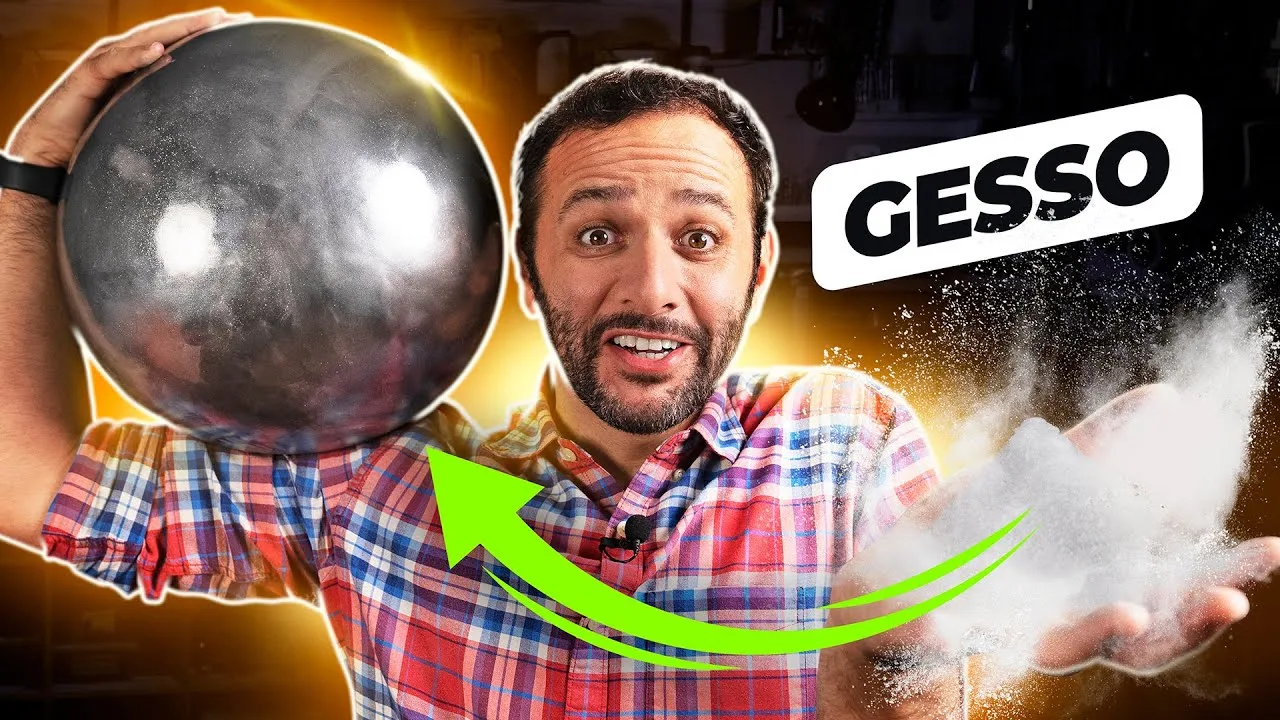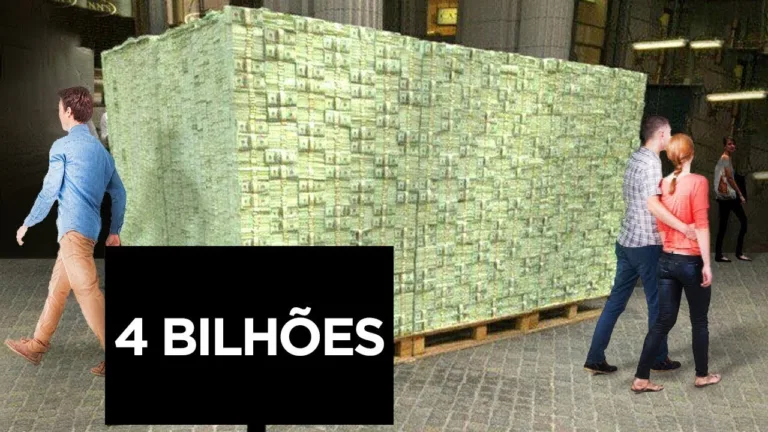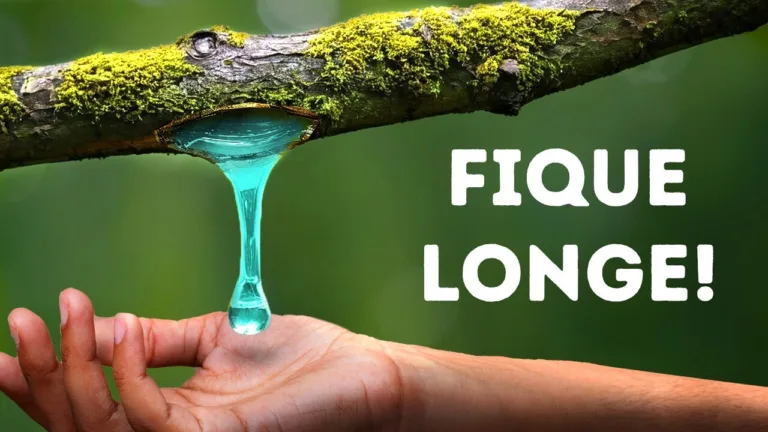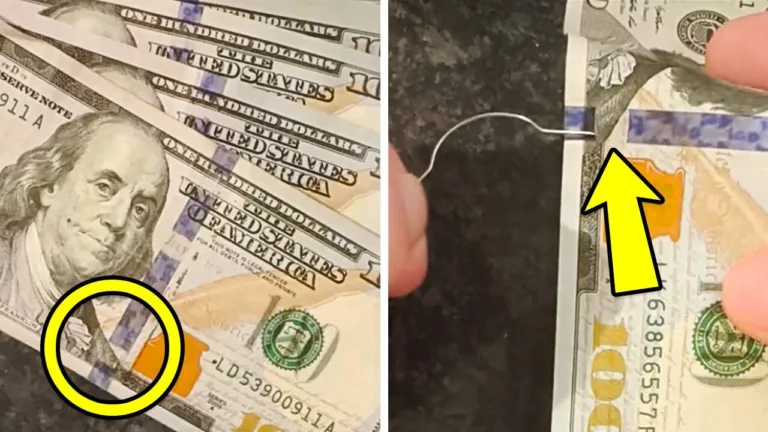A BOLA PERFEITA de GESSO
Today we are going to make a perfect ball of plaster. Wait! What are you doing here? This video has nothing to do, it's not for you… in this video. Are you seriously Going to make a plaster ball? The title of the video is perfect ball of plaster, In the thumbnail there is me holding a perfect ball of plaster, but no, the ball Will be made of unicorn horn powder. Plaster ball is not funny at all. Just throw A bunch of plaster and roll it up and… make a ball. But you didn't even watch It and you're already complaining. Stay until the end, because you will see that This ball is hollow, it is very easy to make and more! You can do it at home, and it's cheap, okay? If it's really good, I'll subscribe to the channel. To make this ball that I really think is worth making at home, you'll only need two things. A balloon from a birthday party, which I found out they call a ball in Rio de Janeiro. So, put in the comments, please, what is your name and the place where you are to Find out if there are other names in other places. And of course we're going to need plaster. You can buy this stuff at a construction material store, we'll use quick-drying plaster. As we did several tests, we already bought 40 Kg. And it's bad to get off the ground. I'm going to start by mixing the plaster with the water. For a small ballon, I'll Use 300g of plaster and 150ml of water. Water does not need to be weighed, because Each gram of water is exactly 1 ml, so 150 grams are 150 milliliters. I'm going To mix the two and stir a lot, there can't be lumps of plaster in here, ok? It has To be pretty fluid. Now the secret of the thing begins. To make our life easier, I'm going to put this snot inside a PET bottle, fill a ballon until It's the size we want the ball to be, fit it here in the mouth of the bottle and Throw all the plaster inside the ballon. Then I need to twist the mouth a lot here so the thing doesn't get pear-shaped, this will make it very round. Now all I have to do is tie a knot and I have to keep turning this here in my hand Very carefully, because the plaster gets on the walls of the ballon and one layer Of plaster accumulates on top of the other. You have to keep turning this here very carefully so as not to deform the ballon because In here a chemical reaction will take place that hardens the plaster. Yes, plaster Does not dry, it is a chemical reaction. While I'm spinning here, I'm going to ask My clone to explain it to you inside the studio. Plaster comes from a mineral called Gypsum, which has calcium sulfate. In nature, this mineral forms crystals that have water in their composition. We will have two water molecules for each calcium ion. So it would look more or less
Like this here. For us to transform this into the plaster that is even sold in stores, We have to remove the water. So, the gypsum passes through an oven, it dries, loses A lot of water and turns into hemihydrated calcium sulfate, so for each atom of calcium, We have half of water, or for every two of calcium, we would have one of water. It turns out that this hemihydrate is dying to get the water back. When you mix water in the plaster that we buy, the water returns to the crystal. So, we have a new crystal that is formed there, and it becomes part of it. This means that in plaster it is not that the water dries and goes away as if it were glue. No, water embeds in the plaster and that's why it sets so fast, it doesn't need to dry. Five minutes doesn't seem like much, but it's tiring to do this thing. I'm starting to feel that the plaster has stopped running in here, it's already a bit pasty. The ballon is losing flexibility, it's turning into a hard ball now. And that's when I'm afraid of cracking what's being formed here. It started to heat Up, let's leave the ball in a kind of nest to cure the plaster. We can open it after Only 15 minutes there. But since I don't want to wait 15 minutes without doing anything, Let's clean this thing up and make one more right away. I want to make a change Here, but I think it's going to be messy. Let's put a little bit of blue dye on The plaster. Oh my God, it's hardening. I lost that plaster. Look, it's practically solid now. I'm going to try to throw in the dye before now and mix it first with just a little Water. It's very hard, I'll put some more water to see. It hardened. The dye interfered with the plaster. Now let's do it differently. I'm not going to put more paint dye, I'm going to drip aniline, food coloring. It's Going to be silly, the color has no comparison with paint dye. It's already hard. I haven't given up using this wall dye yet, I think it's going to look really nice. So let's change the scheme. I'm going to throw the dye inside the ballon, so it Will only come into contact with the plaster when the plaster is already inside the Ballon. I think something is going to happen here, I don't know exactly what. Now I'm going to shake the plaster inside the bottle which helps to remove the pellets. So, do you bet I'm going to walk out with a blue mouth or not? No! The plaster hardened inside the bottle. It has already hardened. What a disaster. Let's double down now!
A big ball, huh? We tried to find balloons that were as round as possible, but they are not very easy To find. I can already see that it didn't work out here, no. You can see a crack Inside the ball, let's leave it in the nest later and see what happens. Let's make another one. It came in much faster. It was still full of pellets. It seems that I managed to put the plaster in here When it was much more liquid than before. It's pretty wet. I think this will help to stop it concentrating all on the same point, because this Is very bad, the plaster is all in one part, that part is very hard, but the rest Is very thin. I guess that's why the other one cracked. I'll try spinning in the Water. The heaviest part wants to stay down, and then it's already in the position It wants and not in the position I want. I don't think it worked, no. Maybe we Have the perfect ball here, huh? It's already hard and starting to warm up. Go to the nest. If you thought that was the biggest one of all, you're wrong. We bought one of those transparent balloons that people usually put some LEDs around, Put another ballon inside, it's that special birthday party balloon. It has to be Stretched a little beforehand and inflated with compressed air. Wow! Now the scheme will have to be a little different. 2 kg of plaster. It didn't fit. A liter of water, I'll add 100 ml more to make it a little bit softer… What I want to see is to put this thing inside the ballon now, and I can't be slow. Daniel, help me here, please. Let's fill this up here to make it a sphere. I won't be able to tie a knot here. Now it's easier to manipulate the ball, no. And I'm scared to death that some region is left without it, because now I have to Turn around a lot and this thing is not as easy to move as a ballon. It started to harden. I am already feeling that the heaviest part is not always at the bottom. It's all cracked. It looks like a dinosaur egg that is about to hatch. Just look! Wow, it was getting so pretty. It won't survive. Aw poor thing. I was afraid that the plaster would accumulate in just one spot, but in the end I Think I put too little plaster. Let's do a necropsy here. No. It accumulated a
Little, yes, but I think if we had put more plaster it would have survived. The good news… is that I have one more and it's even bigger. Oh, it's leaking. It's stuck! But I think it can be fixed, because it's not as elastic As a normal balloon. I think we can live with this little hole, yes. Let's try Again. 4 kg now! I'm not kidding, I'm not even going to pick it up with a spoon, no. 2 liters of water. I don't think that much plaster will fit in there, but come on, let's try. Wait a Minute, we have to clean it well. Go on, put it in. Covered. All right, don't waste Time. It's still leaking. I'm going to take this out here, I'm going to fill it Through the hole… Oh, I'll leave it very clean, then you put it. Yeah, it still leaking. It's already starting to harden. But it's too heavy, it won't roll over in your Hand, no. I need an emergency solution. The advantage of doing it in the water is that you force the wall much less. You can see that it is not massive, no. If it was massive, it would sink here. There's a light at the end of the tunnel. Oh no. Just look. I'll leave it in the pool, then we'll come back? Am I going to leave it here in the pool to get hard? I think that's the way, right? Today only tomorrow. It's all or nothing. Let's try to inject plaster in here and fix just the little piece that is broken, Keeping it hollow. I need to make a hole here in the ballon, so first I'm going To reinforce it with duct tape and I'm also going to build a kind of injector, like A syringe needle to put the plaster inside. I think 1 kg of plaster is enough. It's More than enough to plug that hole. It's very difficult to do this here on the drill, there's a lot of pellets. Look how nice it is. The plaster… going into place. It's getting smaller, it's deflating a little bit. Let's fill it up, let's fill it Back up. There's a lot leaking here, look. Let's wash it at least to remove that cast around it. Let's agree that it wasn't for lack of effort, right? It was getting cute as hell. I don't want to give up that ball. It's really cool. I'll confess that I thought About filling this with plaster up to the hole, but putting a balloon in here and
Filling it with air is much easier. So, let's make about 400 grams of plaster only And cover the hole that was left. It's going to be gooey at first, but I think it'll Work out in the end. But 400 wasn't enough, let's go with another 400 and take the Opportunity to cover some holes, some defects that were left. Before the plaster Hardens, we can pass the sandpaper. And this is an absurd advantage, because sanding Plaster is very easy. I'm doing several tests with sandpaper of different grains, Rougher sandpaper, less rough, and I see that it can be sanded with a very fine sandpaper That already gives the finish. This is sensational. Oh, what a beautiful thing. We fixed the ball. It's pretty round. While the giant dries up, let's take a look at the ballons I left yesterday for today. This one was the first one, I didn't have much practice yet. Cool! It comes out smooth, smooth. Look at this… and the rest is pretty much perfect. This one could already be the Perfect ball of plaster. That was the one with blue food coloring, which is the traditional dye in Manual do Mundo. Ah, but I'm sure there will be a lot of people who will do it at home. Tag us on Instagram if you do. This is the one I'm most curious about, with dye inside. I'm Afraid the dye hasn't dried. There! Ink dye. Too bad the ball didn't harden properly. Look, there are two cracks. One here and one here, but it's too beautiful. This Is the one I was betting on the most, which I thought was the most spherical of all And it's pretty big too. At that time, I had enough practice making the balls. After A while, the plaster becomes quite resistant. But this here, if we leave it the Way it is, the humidity will start to damage the plaster. It will start to fall Apart on its own, it doesn't look good. So, we need to pass a sealer up here. We did two tests here. With the sealer and the white glue. This one was a mixture of one part glue to four Parts water, it's a very diluted glue, but at the same time, it's a very good quality White glue, that wood glue. And the glue turned out really shiny, I'm going to apply Some black paint over it to see what it will look like. Now comes the cool part. Let's put glitter on top of this here. I watched a lot of videos about effects you Can give plaster, and the glitter one is the coolest. I didn't think it turned out Very well, no, but this is a pigment, not exactly glitter. We used this here when We didi soap. Glitter really is that dust. Wow! It gives the impression that it's really metal, metal like lead, dark steel. I think we have the effect.
Let's then cut some supports for these balls here with the laser, if I don't put them On the table to paint, they'll roll down and break. It's not exactly what I want. I'm going to cut plywood, which is a softer wood, because I'm afraid of marking the balls. Ready. I'll choose the prettier side to be on top. It's beautiful, huh? It's one part glue to four parts water. It may look very watery, but it really is watery. The idea is to make a kind of crystal cover up here. In the place where we saw the person teaching how to do this, the guy simply put the Plaster inside the glue and removed everything soaked, and then it dripped beautifully. The problem here is that the ball is too big. I would need, I don't know, about 10 liters of glue to be able to do this. That's right, let's take a risk adding A little over here to see if it gets shiny afterwards. One thing: this here is going to be much brighter than we imagined. This glue finish gives the impression that you have completely plasticized the ball. I'll confess to you that it's not completely dry, I still feel something sticking To it, but we've already left it here resting for two days. So, I'm going to use A 600-grit sandpaper, which is just to break up some of the edges here, some dust That fell on top. In the smaller balls, it was a little defective underneath, but I'm finding the result in general much better than I imagined. Let's try to do what Has been tested. I'm going to apply a layer of black spray on top of the glue, I'm Going to make two balls, the big one and a small one too. I'm putting a lot of paint, Almost the entire can is going here. By the way, those spray cans don't last at All. And now the final touch with silver glitter. Let's start with the little one, Because what we do wrong, we won't do with the big one. Look… now I know how the Guys made those videos where they make the aluminum ball, put it in the microwave and a perfect ball comes out. It's not aluminum, that's it! And lastly… the giant ball. No, no, no… I was holding the toilet paper here, it left a mark. I'm going to have to repaint here. While the paint on the giant ball is drying, I want to do something special with this one. Yes, I will break it. Look how thin the layer is! Still, it's super tough. And now on the inside, I'm going to apply this golden pigment that we have here without
Anything, without glue, without any preparation. Pigment directly on plaster. We've already seen that it doesn't stick very well directly to the plaster. Now there is no second chance. It took about five days of recording, but honestly, it's one of the coolest balls We've ever made, because it's the easiest to make at home of all. It's easier than the clay one, it's easier than the aluminum one… if someone asks Me "I want to make a ball at home, what should I do?", do the plaster one. So, don't forget to give the thumbs up and leave a comment saying which ball you want To be next, ok? Enjoy this ball that is very cool. Or these balls that look really cool. I don't know about you, but I want to do something with this ball here. The annoying thing is to clean up this mess afterwards… If you liked working with plaster, we once taught you how to make a piggy bank, which Also uses a ballon, but the method is different. The ballon goes inside the piggy, it's really cool. It's a very old video. Did anyone notice the shirt hanging here?







